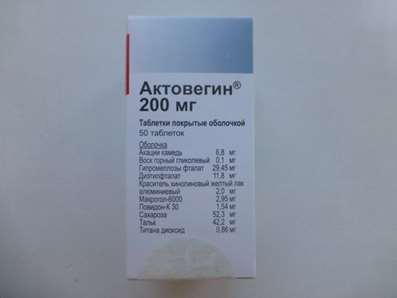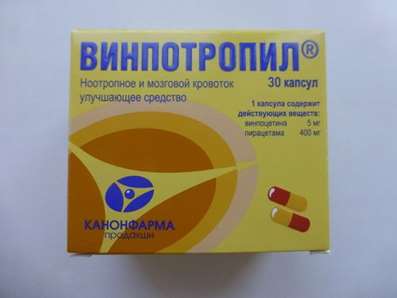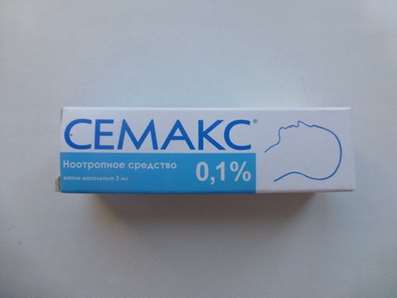Instruction for use: Meloxicam 15mg
I want this, give me price
International Nonproprietary Name (INN): Meloxicam
Pharmaceutic group: Painkillers
Presentation:
Tablets 7.5 mg ¹20 or 15 mg ¹20.
Available with prescription
Indications for Meloxicam
Meloxicam is a nonsteroidal anti-inflammatory drug (NSAID) with analgesic and fever reducer effects. It is a derivative of oxicam, closely related to piroxicam, and falls in the enolic acid group of NSAIDs.
Meloxicam inhibits cyclooxygenase (COX), the enzyme responsible for converting arachidonic acid into prostaglandin H2—the first step in the synthesis of prostaglandins, which are mediators of inflammation. Meloxicam has been shown, especially at its low therapeutic dose, selectively to inhibit COX-2 over COX-1.
Meloxicam concentrations in synovial fluid range from 40% to 50% of those in plasma. The free fraction in synovial fluid is 2.5 times higher than in plasma, due to the lower albumin content in synovial fluid as compared to plasma. The significance of this penetration is unknown, but it may account for the fact that it performs exceptionally well in treatment of arthritis in animal models.
DRUG INTERACTIONS: In studies where meloxicam was administered with cimetidine (Tagamet), digoxin (Lanoxin), and methotrexate (Rheumatrex), there were no drug interactions. Meloxicam may interfere with a class of drugs called ACE inhibitors, e.g., captopril (Capoten) and ramipril (Altace) or the water pill, furosemide (Lasix), that are used for controlling high blood pressure,. This may lead to an increase in blood pressure, and as a result, the dose of ACE inhibitor or Lasix may need to be changed when starting or stopping meloxicam.
Meloxicam should be avoided by patients with a history of asthma attacks, hives or other allergic reactions to aspirin or other NSAIDs.
If aspirin is taken with meloxicam there may be an increased risk for developing an ulcer.
Persons who have more than 3 alcoholic beverages per day may be at increased risk of developing stomach ulcers when taking meloxicam or other NSAIDs.
Cholestyramine (Questran), colestipol (Colestid) and colesevelam (Welchol) may decrease the effectiveness of meloxicam by preventing its absorption from the intestine.
Lithium (Eskalith or Lithobid) blood levels may increase or decrease after meloxicam therapy starts or stops. Therefore, both the patient taking lithium and the blood level of lithium need to be evaluated when starting or stopping meloxicam.
Trade name of the drug – Meloxicam
Dosage Form: tablets
Active substance:
meloxicam - 7.5 mg or 15 mg;
excipients: pregelatinized starch (starch 1500) -30.0 / 60.0 mg, microcrystalline cellulose - 61.3 / 122.6 mg sodium citrate dihydrate - 20.0 / 40.0 mg colloidal silicon dioxide (Aerosil 380 ) - 0,6 / 1,2 mg magnesium stearate - 0.6 / 1.2 mg.
Description:
Tablets are light yellow with a greenish tint. For the dosage of 7.5 mg - flat-cylindrical, with a facet. For the 15 mg dosage - flat-cylindrical, with a facet and Valium.
Pharmacotherapeutic group: Painkillers
ATX code: M01AC06
Pharmacological Properties of Meloxicam
Pharmacodynamics
Meloxicam - a non-steroidal anti-inflammatory drug with analgesic, anti-inflammatory and antipyretic activity. The anti-inflammatory action due to inhibition of the enzymatic activity of cyclooxygenase-2 (COX-2) involved in the biosynthesis of prostaglandins in inflammation. The meloxicam less effect on cyclooxygenase-1 (COX-1) participating in the synthesis of prostaglandins which protect the mucosa of the gastrointestinal tract, and taking part in the regulation of blood flow in the kidney.
Pharmacokinetics
Well absorbed from the gastrointestinal tract (GI tract), the absolute bioavailability of meloxicam - 89%. Simultaneous food intake does not modify absorption. When using the drug orally in doses of 7.5 mg and 15 mg doses are proportional to its concentration. The equilibrium concentrations are reached within 3-5 days. With long-term use (more than 1 year), the concentrations are similar to those that have been observed after the first reach equilibrium. Plasma protein binding is more than 99%. The range difference between the maximum and basal concentrations of the drug after administration once a day is relatively small and is at a dose of 7.5 mg 0.4-1.0 mg / ml, and at a dose of 15 mg - 0.8-2, 0 mg / mL (shown, respectively, the values Cmin and Cmax). Meloxicam penetrates the blood-tissue barriers in the synovial fluid concentration reaches 50% of the maximum drug concentration in plasma.
Almost completely metabolized in the liver with the formation of four pharmacologically inactive derivatives. The main metabolite, 5'-karboksimeloksikam (60% of the dose), formed by oxidation of an intermediate metabolite 5'-gidroksimetilmeloksikama which is also excreted, but to a lesser extent (9% of the dose). Studies in vitro have shown that the metabolic conversion plays an important role CYP 2C9, additional importance CYP 3A4 isozyme. The formation of two other metabolites (components, respectively, 16% and 4% of the dose) participates peroxidase, which activity is likely to vary individually.
Displayed equally through the intestine and the kidney, mainly in the form of metabolites. Through the intestines in unchanged output of less than 5% of the daily dose in the urine as unchanged drug is found only in trace amounts. The half-life (T1 / 2) of meloxicam is 15-20 hours. Plasma clearance averages of 8 ml / min. Elderly persons drug clearance is reduced. The volume of distribution is low and amounts to an average of 11 liters.
Hepatic or renal failure moderate effect on the pharmacokinetics of meloxicam is essentially no effect.
Indications for Meloxicam
Symptomatic treatment of osteoarthritis, rheumatoid arthritis, ankylosing spondylitis (Bechterew's disease) and other inflammatory and degenerative diseases of the joints accompanied by pain.
Contraindications for Meloxicam
hypersensitivity to the active substance or auxiliary components;
contraindicated in the post-coronary artery bypass surgery;
uncompensated heart failure;
a history of bronchial attack, rhinitis, urticaria after taking aspirin or other NSAIDs (complete or partial syndrome of intolerance to acetylsalicylic acid - rhinosinusitis, urticaria, polyps of the nasal mucosa, asthma);
erosive and ulcerative changes in gastric mucosa and 12 duodenal ulcer, active gastrointestinal bleeding;
inflammatory bowel disease (ulcerative colitis, Crohn's disease);
cerebrovascular bleeding or other bleeding;
severe hepatic impairment or active liver disease;
severe renal insufficiency in patients who are not undergoing dialysis (creatinine clearance less than 30 ml / min), progressive renal disease, including confirmed hyperkalemia;
pregnancy, breast-feeding;
Children up to age 15 years.
Precautions: Ischemic heart disease, cerebrovascular disease, congestive heart failure, dyslipidemia / hyperlipidemia, diabetes mellitus, peripheral arterial disease, smoking, creatinine clearance less than 60 mL / min.
A history of the development of ulcerative lesions GIT (gastrointestinal tract), the presence of infection Helicobacter pylori, old age, long-term use of NSAIDs, frequent alcohol consumption, severe somatic diseases, concomitant therapy following medications:
anticoagulants (eg, warfarin);
antiplatelet agents (e.g., aspirin, clopidogrel);
oral steroids (e.g., prednisone);
selective serotonin reuptake inhibitor (such as citalopram, fluoxetine, paroxetine, sertraline);
To reduce the risk of adverse effects on the gastrointestinal tract to use the minimum effective dose as low as possible short course.
Meloxicam Dosage and Administration
The drug is taken orally during a meal once a day.
The recommended dosing regimen:
Rheumatoid Arthritis: 15 mg. Depending on the therapeutic effect, the dose can be reduced to 7.5 mg per day.
Osteoarthritis: 7.5 mg. With the ineffectiveness of the dose may be increased to 15 mg per day.
Ankylosing spondylitis: 15 mg per day.
The maximum daily dose should not exceed 15 mg.
In patients with an increased risk of side effects, as well as in patients with severe renal impairment on hemodialysis, the dose should not exceed 7.5 mg per day.
Side effect ofMeloxicam
From the digestive system: more than 1% - indigestion, including nausea, vomiting, abdominal pain, constipation, flatulence, diarrhea; 0.1-1% - transient increase in activity of "liver" transaminases, hyperbilirubinemia, eructation, esophagitis, gastroduodenal ulcer, bleeding from the gastrointestinal tract (including hidden), stomatitis; less than 0.1% - perforation of the gastrointestinal tract, colitis, hepatitis, gastritis.
From the side of hematopoiesis: more than 1% - anemia; 0.1-1% - changes in blood counts, including leukopenia, thrombocytopenia.
For the skin: more than 1% - itching, skin rash; 0.1-1% - urticaria; less than 0.1% - photosensitivity, bullous rash, erythema multiforme, including Stevens-Johnson syndrome, toxic epidermal necrolysis.
The respiratory system: less than 0.1% - bronchospasm.
From the nervous system: more than 1% - dizziness, headache; 0.1-1% - vertigo, tinnitus, drowsiness; less than 0.1% - confusion, disorientation, emotional lability.
Since the cardiovascular system: more than 1% - peripheral edema; 0.1-1% - increase in blood pressure, palpitations, "tides" of blood to the skin.
From the urinary system: 0.1-1% - hypercreatininemia and / or an increase in urea in blood serum; less than 0.1% - acute renal failure; connection with the intake of meloxicam is not installed - interstitial nephritis, albuminuria, hematuria.
From the senses: less than 0.1% - conjunctivitis, visual disturbances, including blurred vision.
Allergic reaction: less than 0.1% - angioedema, anaphylactoid / anaphylactic reactions.
overdose
Symptoms: impaired consciousness, nausea, vomiting, epigastric pain, bleeding in the gastrointestinal tract, acute renal failure, liver failure, respiratory arrest, asystole.
Treatment: No specific antidote; an overdose of the drug should carry out gastric lavage, activated charcoal (within the hour), symptomatic therapy. Cholestyramine accelerates the excretion of the drug. Forced diuresis, alkalization of urine, hemodialysis - are ineffective because of the high regard of the drug to blood proteins.
Interaction
The risk of myopathy during treatment with other drugs of this class is increased by the simultaneous With simultaneous use of indapamide with lithium preparations may increase the concentration of lithium in blood plasma.
Astemizole, erythromycin (w / w), pentamidine, sultopride, vincamine, antiarrhythmics IA (quinidine, disopyramide) and class III (amiodarone, bretylium tosylate, sotalol) may increase the risk of heart rhythm disorders for torsades de pointes type (ventricular tachycardia type "pirouette").
Nonsteroidal anti-inflammatory drugs, steroids, tetrakozaktid, sympathomimetic reduce the hypotensive effect of baclofen increases.
Saluretics, cardiac glycosides, glucose and mineralokortikosteroidy, tetrakozaktid, amphotericin B (w / w), laxatives increase the risk of hypokalemia.
In an application with cardiac glycosides increases the likelihood of digitalis intoxication with calcium supplementation - hypercalcemia, metformin - possibly worsening lactic acidosis.
The combination with potassium-sparing diuretics may be effective in a certain category of patients, however, this is not completely ruled out the probability of the development of hypo- or hyperkalemia, especially in patients with diabetes and renal failure.
Angiotensin converting enzyme (ACE) inhibitors increase the risk of hypotension and / or acute renal failure (especially with existing renal artery stenosis).
Iodinated contrast agents in high doses increase the risk of renal dysfunction (dehydration). Before use of iodine-containing contrast agents to patients need to restore lost fluids.
Tricyclic antidepressants and antipsychotic drugs increase the hypotensive effect and increase the risk of orthostatic hypotension.
Cyclosporin increases the risk of hypercreatininemia.
It reduces the effect of indirect anticoagulants (coumarin derivatives or indandiona) due to increased concentration of clotting factors by reducing blood volume and increase their production by the liver (may require dose adjustment).
It enhances the blockade of neuromuscular transmission, developing under the influence of non-depolarizing muscle relaxants.
special instructions for Meloxicam
Caution should be exercised when using the drug in patients with a history in which the gastric ulcer and duodenal ulcers, as well as in patients receiving treatment with anticoagulants. In these patients, increased risk of erosive and ulcerative diseases of the digestive tract.
Use caution and monitor renal function when using the drug in elderly patients, patients with chronic heart failure with signs of circulatory failure in patients with cirrhosis, and in patients with hypovolemia in surgical care.
In patients with renal failure, if creatinine clearance greater than 25 mL / min, no correction is required dosing regime.
In patients undergoing dialysis, medication dosage should not exceed 7.5 mg / day.
Patients taking both diuretics and meloxicam, should take plenty of fluids.
If during treatment any allergic reaction (itching, skin rash, urticaria, photosensitivity), you must seek medical advice with a view to resolving the issue of termination of dosing.
Meloxicam, like other NSAIDs, may mask the symptoms of infectious diseases.
The use of meloxicam, as with other drugs that block prostaglandin synthesis, may affect fertility, so it is not recommended for women wishing to become pregnant.
Management vehicles, maintenance vehicles and machinery
Use of the drug can cause undesired effects in the form of headaches and dizziness, drowsiness. It is necessary to abandon the vehicle management and maintenance of machines and mechanisms that require concentration.
Release form of Meloxicam
Tablets of 7.5 mg and 15 mg.
10 tablets in blisters. 1, 2, 3, 4 or 5, the contour of cellular packaging together with instructions for use are placed in a pile of cardboard.
100 tablets in a jar polymer, each jar along with instructions for use are placed in a pile of cardboard.
Storage conditions of Meloxicam
In a dry, dark place at a temperature no higher than 25 ° C.
Keep out of the reach of children.
Shelf life of Meloxicam
3 years.
Do not use beyond the expiration date printed on the package.
Conditions of supply of Meloxicam from pharmacies
With prescription.

 Cart
Cart





